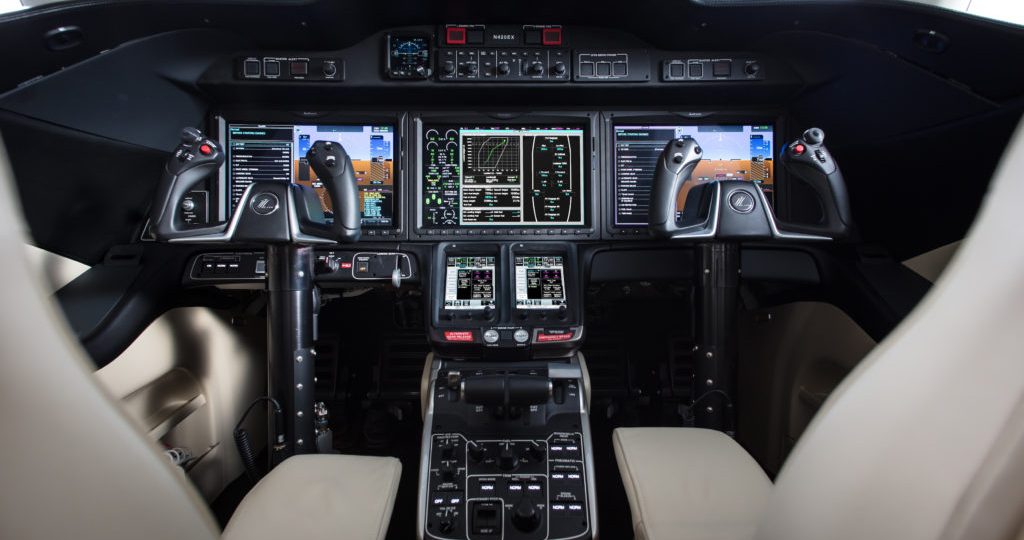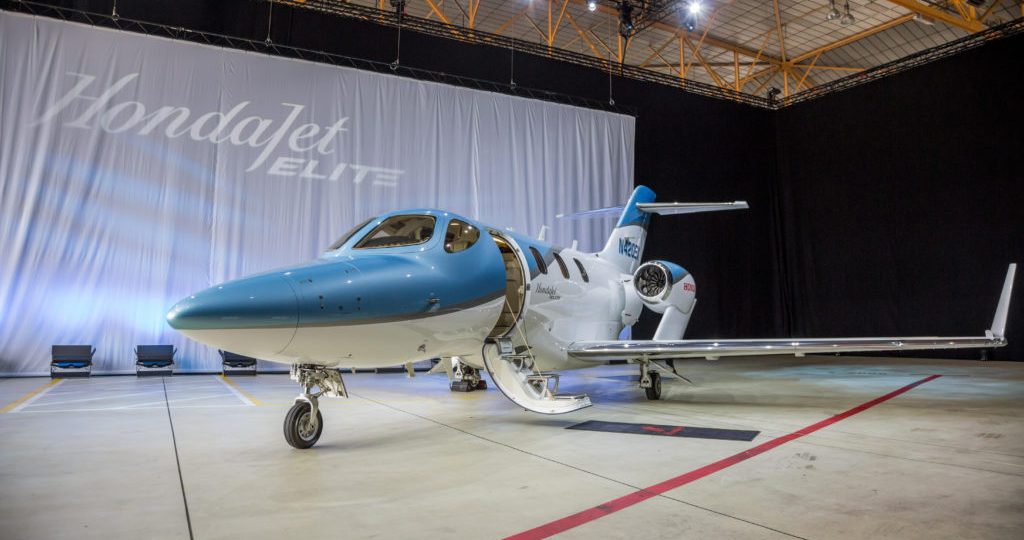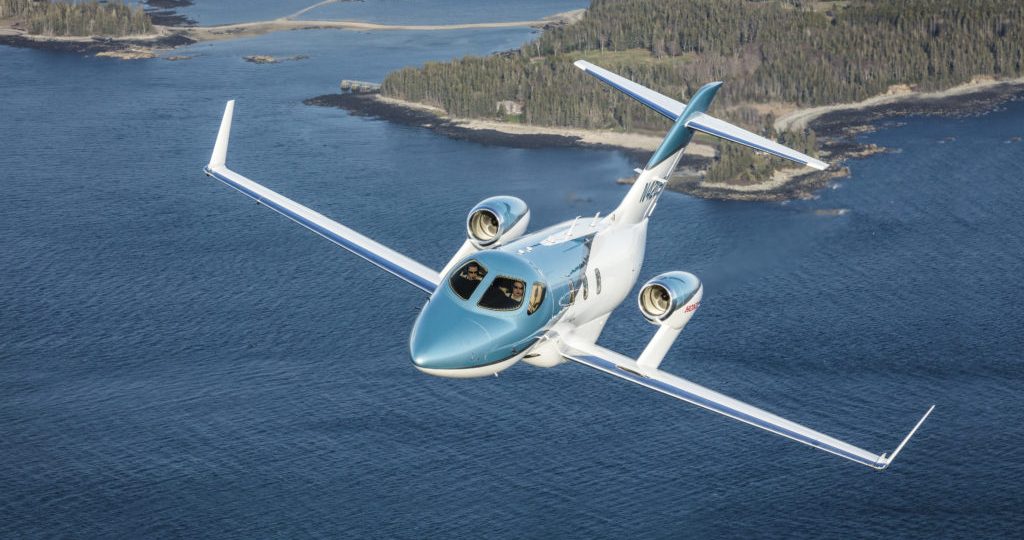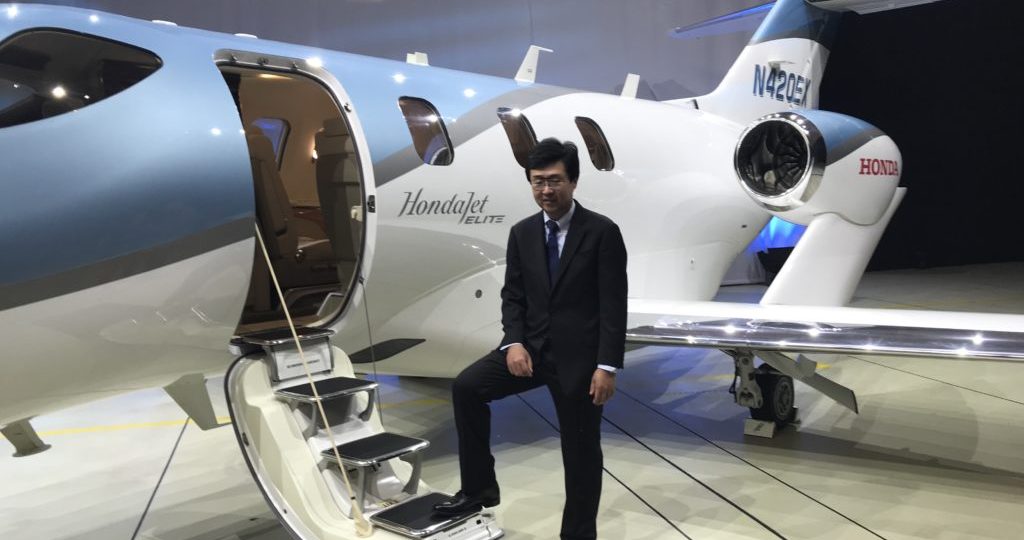Selling jets and changing mindsets

When pointed out that it seems a very fast turnaround, with the delivery just three months from the press reveal at EBACE, Fujino smiles: “Or a very late announcement?” he suggests.
The new HondaJet Elite incorporates the technological innovations found in the original, including the unique Over-The-Wing Engine Mount configuration, Natural Laminar Flow (NLF) nose and wing and composite fuselage, but with a number of tweaks to improve performance and efficiency. The interior and exterior noise is greatly reduced, empty weight reduced for a more than 90kg payload increase, and there are significant updates to the ergonomically-designed Garmin G3000-based flight deck.
“If we can expand the aviation market then it will not be just one product that we have produced, we will have changed the industry.”
Given the improvements, and Honda’s unusual dealership model, in which the dealer commits to buying aircraft from the company and then tries to sell them, this may seem likely to put pressure on the dealerships to offload the older edition. Fujino shakes his head. “The HondaJet Elite is a premium product, and not all customers will want that. There is a price difference of approximately US$300,000. Not an enormous difference, but a differentiator.”
He is also quick to endorse the sales model, which now has 15 dealers worldwide with the announcement of Jetex as representative for the Middle East, spanning 10 countries including the GCC, Pakistan, and Turkey.
He says: “Our focus is on providing the best parts operation and support, which is very consistent for Honda and its products. Sometimes people struggle to get the service or parts, so our business model is to put a lot of resources and investment into customer support from the beginning. I think we have a very good customer support reputation.
“It is a difficult market, but I think how we market a smaller jet, all depends on us.”
He explains further: “With our system, the customer can get quick maintenance support from our dealer near them, they don’t have to come to Greensboro, which is more convenient for them.
“For a more technical service, we will support with Field Technical Reps – service people who go out to the dealers. It is two layers. We have technical field reps at each dealer location, and also as a required by our customer, they can come to our facility for customer servicing. Currently, if our customer wants a thorough inspection, they come to Greensboro.”

The move into dealership by Jetex was an interesting one, diversifying from their core business. Fujino is confident it will work. “We worked together to create new sales teams and to provide the best service. Jetex has a very good customer record and a reputation for providing quality support for charter services. I think that if they have the same kind of philosophy with the sales of HondaJets then we will work very well together. They have a worldwide presentation and have built an international reputation. They can really reinforce our service standards.”
They do, however, have a challenge in front of them. Traditionally, the region is a buyer of heavy jets. Light aircraft manufacturers have not managed to make an impact with consumers. Fujino acknowledges this, but believes things will change. “There is a mindset in the Middle East for large cabin jets, which can make it difficult for some OEMs to sell aircraft. But with HondaJet the comfort levels are that of a large cabin aircraft. Of course, the cabin size is small, but the riding quality is very similar to a large jet and also its quietness. This is nothing like a turboprop or even a light jet. It is something radical between larger jet and small jet.
That is why we have formed a business alliance with All Nippon Airlines, to provide a feeder service. It will act as an introduction to business aviation. Once they have used it, they may realise how a business jet can be used and how efficient it can be. That is what we hope to do with HondaJet: show more people how and why business jets can be used.
“Also, the Middle East is shifting. When I talk, especially with young businessmen, in Dubai and the Middle East, for example the Honda Motorcycle dealers, they are more westernised with a different view. I think for specific business purpose they still really require a more reasonable and cost efficient solution to meet their needs. Maybe now even for one passenger they may use Gulfstream, but eventually, if they start a different business outlook and different mindset they will realise that HondaJet is more efficient. It is a difficult market, but I think how we market a smaller jet, all depends on us.”

It is not the first time the company has faced such obstacles. Fujino takes it in his stride. He says: “It was the same in China. China was only a large cabin jet market, but that mindset is really changing, it is becoming more westernised. Everybody said it is very difficult to sell lighter jets in China, but actually it is how you approach it. We have already sold nine HondaJets in China this year.”
Turning the Japanese
The company is already working on another difficult market, their home base of Japan, a market that has been extremely slow to embrace business aviation.
Fujino says: “Many Japanese people do not know how business jets can be used, so when they come to the United States, many of them are still using airlines. They will spend five hours in some airport, and then get to their final destination at night, when the meeting is the next day. If you use a HondaJet, you may be able to go to two or even three locations in one day.
“I think people’s mindset will change to look at cost performance, instead of just what is affordable. I am trying to convey that message to the Japanese people.
“That is why we have formed a business alliance with All Nippon Airlines, to provide a feeder service. It will act as an introduction to business aviation. Once they have used it, they may realise how a business jet can be used and how efficient it can be. That is what we hope to do with HondaJet: show more people how and why business jets can be used.
“If we can operate the HondaJet for US$2,500 per hour in the United States with four passengers, I am confident that people will choose HondaJet, rather than paying US$500 for an airline. Because of the efficiency gained.
“My goal is to make change. And once change is made, it becomes standard. There are many uncovered markets in the world, so my aim is not only competing in the existing market, but how we can cultivate that market.”
“We will focus on how to expand and create markets, so we can convey that message, and people can start to realise. Many people think they don’t have any way to use private aviation, but if people start to to experience it, then gradually we can change that. It will take five or even 10 years, but eventually we will have a big change. We will change the perception of whether you can afford to use a private jet.”
He concludes: “If we can expand the aviation market then it will not be just one product that we have produced, we will have changed the industry.”
JeteX brings hondajet in the Middle East
HondaJet dealer Jetex debuted the HondaJet at the Istanbul Airshow at the end of September. The company has plans for other activations to introduce the compact jet to the region. From the first week of October until February, visitors to Dubai South will be able to get a feel for the comfort of the HondaJet cabin by boarding a full-sized mock-up of the aircraft, which will be on display at the Jetex FBO.
The real thing will be available in December when the HondaJet Elite makes its first landing in the Middle East. Demonstration flights can be scheduled from 1st to 8th of December, with the aircraft then moving to the static display of the MEBA show from 10th-12th December at DWC.










